Think stinging nettles are just a weed? Think again. They’re a delicious, plant with numerous health benefits that can be used in recipes and in so many other ways!
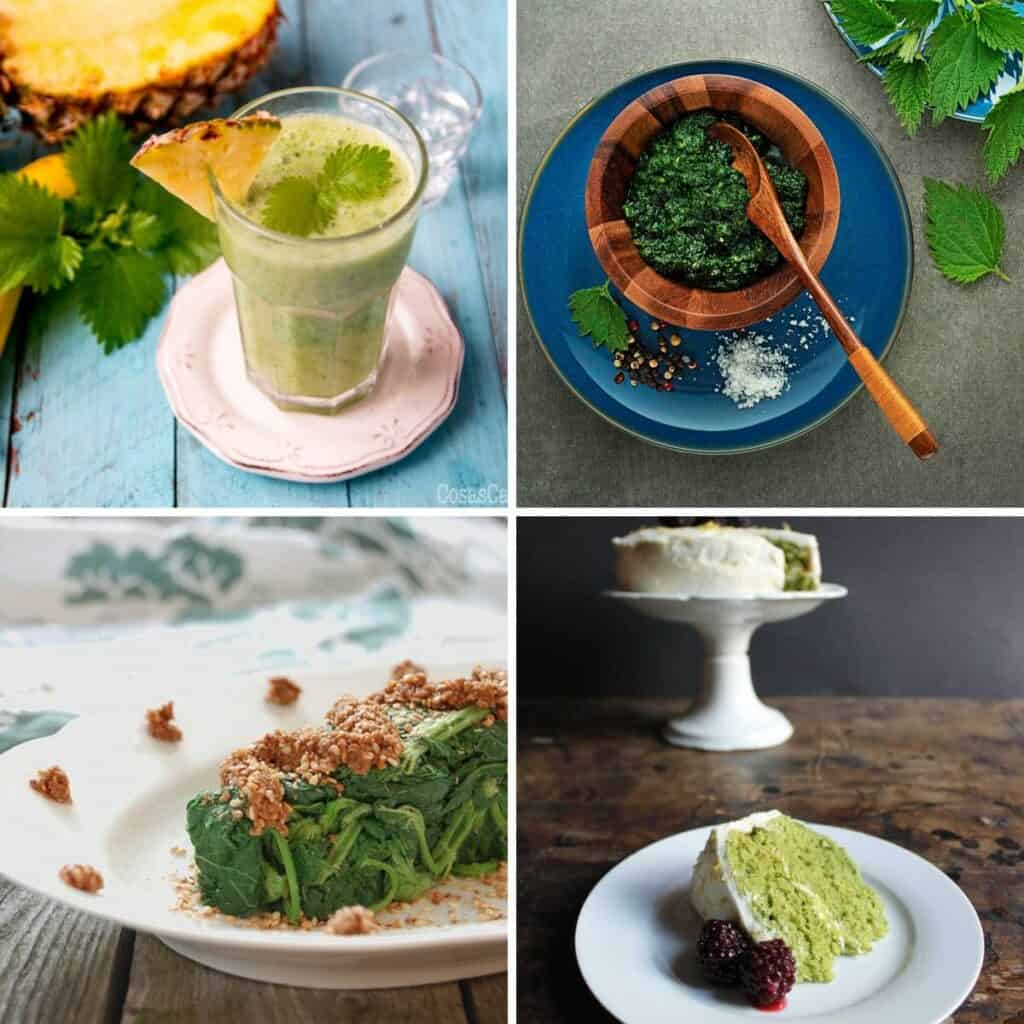
It’s easy to have a love-hate relationship with stinging nettles. While they’re packed with antioxidants and vitamins, their painful stings make you want to banish them from your life sometimes, especially when you’re weeding your garden.
Luckily, while their sting is irritating to the skin, it’s harmless. In fact, it’s thought to help with arthritis and improved blood circulation.
What is the Stinging Nettle?
You have likely seen the nettle plant, scientifically named Urtica Dioica, even if you don’t think you know what it is. It’s native to Europe, Asia, North Africa, and Western North America, but has been also introduced into other areas of the world.
Most people consider it an annoying weed, but it’s a plant that is often used in teas. It has also been used in herbal medicines for years.
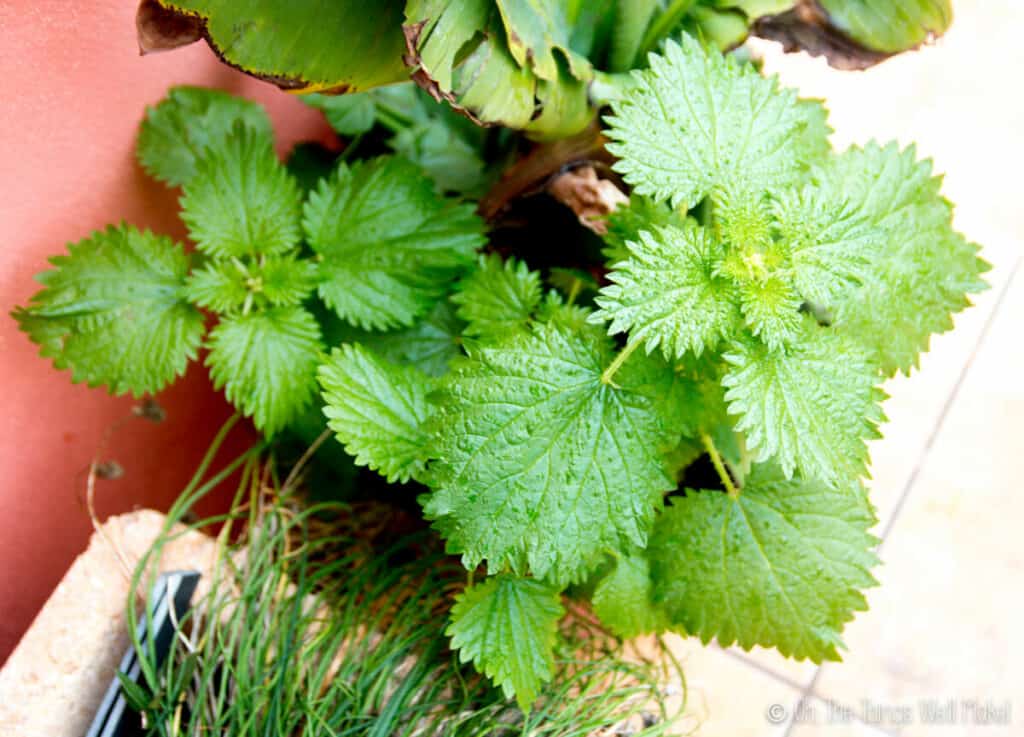
My son used to hate that we have so many stinging nettle plants all over our yard. He likes to go outside and play and would often run through a patch of them by accident. He cried when he’d lose his ball in a patch of it and get stung when trying to retrieve it.
Over the years, though, he’s learned to recognize them and stay away, when needed. This time of year, when the nettles start popping up again, he offers to help me “harvest” some (with gloves). He knows I like to use nettles in herbal teas, smoothies, and other recipes.
How do Nettles “Sting”?
The stinging nettle plant has tiny little needle-like projections all over the leaves and stems. These “hairs” are hollow and act like mini hypodermic needles that inject a shot of formic acid, histamine, and other substances that can irritate your skin. That’s why you may feel pain and/or itchiness after touching them.
Knowing that, makes it seem like it would be impossible to use in smoothies and other foods. Don’t worry, I’ll cover that in a minute…

Health benefits
You might think that this plant would be highly poisonous and impossible to eat, but it’s actually packed with health benefits.
It is a good source of vitamins A, C, D, and some of the B complex vitamins. It also has protein, calcium, iron, beta-carotene, and magnesium.
Nettle is thought to help with urinary tract problems by reducing inflammation and increasing urinary output. It may also help dissolve kidney stones! (I have a history of getting frequent UTI’s and like to drink herbal teas with nettle when I feel minor symptoms coming on.)
This useful plant is anti-inflammatory, and may have some antioxidant enzyme activities, and may even slow the formation of certain types of tumors!
Extracts of the plant were studied to see if its antioxidant properties could help with oxidative stress that negatively affects certain diseases. The conclusion reached was that it may be a helpful addition to those with diabetes and heart conditions to help prevent complications from either of those diseases.
It may also help you reduce blood sugar and blood pressure.
Nettle can also help with diarrhea. I notice that my digestion is better when I add it to my smoothies every few days!
Warning
Avoid nettle during pregnancy, and perhaps while breastfeeding.
Nettle is thought to affect the menstrual cycle, by reducing heavy menstruation, which means that it may also provoke uterine contractions that could lead to premature birth if used during pregnancy.
Where can you find them?
I guess I should consider myself lucky to have wild stinging nettle plants growing all over my garden, especially in the late winter and early spring. Right around this time of year, the small nettle plants are springing up almost all over the place in my area.
Some people, who aren’t so lucky, actually buy small nettle plants to plant in their garden. I’ve heard it can be found in many farmers’ markets and gardening centers. So, if you can’t find any, it’s something to consider.
When to harvest them?
Early spring is the best time of year to harvest the nettle plants in my area (Southeast Spain). Any time you can find young plants, though, is ideal. It’s best to pick the young leaves before the plants start to flower. Once they flower, the plants tend to become more fibrous and the flavor can change, and the .
I harvest more than what I need when I have access to young plants. The excess leaves can be dried for use in herbal infusions (teas). You can also freeze them for use in soups, smoothies, and other recipes year-round.

Can you really eat them?
Yes!
I was really surprised to learn that you could actually eat nettle plants. The first time I tasted them, several years ago, I boiled them in water. Boiled nettles are a lot like cooked spinach.
Cooking the plant inactivates its ability to sting you. There are other ways to do it, though, so you can enjoy them raw…
How to keep nettles from stinging you
- Wear gloves when foraging for stinging nettles. (Some people choose not to. They say the sting helps their arthritic hands. I, on the other hand, am not that hardcore.) ?
- Dehydrate the plants. Once the leaves and “needles” have wilted enough, they will no longer sting you when handling them. This is a great way to make herbal teas with nettles.
- Boil the nettles. Once you cook the leaves in boiling water, the needles will no longer be able to hurt you. This is great for recipes that use cooked nettles, and for making fresh herbal infusions. Cooked stinging nettles can be used in place of cooked spinach in many recipes.
- Crush the nettles. Once the needles on the nettles have been crushed, they will no longer sting you. This is great for being able to use nettles raw in smoothies and pestos. I love using nettles in my smoothies like my tropical stinging nettle smoothie.
What do they taste like?
Stinging nettle plants are often compared to spinach because they can be used in the same ways that you would normally use spinach. That said, I think they have a more subtle, lighter flavor, especially when used raw.
Stinging Nettle Recipes
I knew that nettles were a great replacement for spinach in recipes, but I didn’t realize how versatile they really are. They can be used in soups, rice dishes, smoothies, and even desserts.
Snack recipes
You may be familiar with kale chips, but how about nettle chips? Kale chips have gained popularity over the years because they’re salty and crunchy and a tasty way to eat nutritious kale. By subbing out the kale for nettles, you can convert your garden weeds into a delicious snack.
Stinging Nettle Chips

This kid-friendly breakfast or snack uses “nettle flour” made from drying and grinding up nettle leaves.
Savory Cookies with Stinging Nettle Flour

Sauces
Nettles can also add color and flavor to a simple dip or sauce. This tzatziki-like dip is perfect for dipping veggies and other snacks.
Stinging Nettles Dip with Roasted Garlic Mint
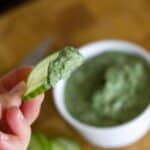
Pesto sauce, my son’s absolute favorite, is traditionally made with basil leaves. Consider switching out some of the basil leaves of your traditional pesto recipe for nettle leaves. Or, try one of these alternative recipes.
Nettle and Ramps Pesto
Nourishing Nettle Pesto

Soups
I’m sure you’ve heard of chicken noodle soup. But what about chicken nettle soup? It sounds like a delicious, healthy alternative to me!
Chicken Nettle Soup

If you prefer creamier soups, these nettle based soups may be exactly what you’re looking for.
Roasted Asparagus and Garlic Stinging Nettle Soup
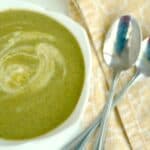
Easy Nettle Soup
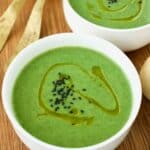
Main dishes and sides
The epitome of comfort food, risotto is a creamy rice dish that can serve as a complete meal. This risotto, made with vegetable broth, is an ideal vegetarian meal.
Spring Brown Rice Risotto with Asparagus and Nettles

Traditionally a breakfast dish in Isreal and the middle east, shakshuka is a simple yet complete meal. This recipe is packed with healthy greens including the nettle.
Green Shakshuka

Gomae is a Japanese side dish normally made with spinach and sesame. Here, nettles take the place of spinach, giving an interesting alternative to this classic recipe.
Nettle Gomae

Desserts
Nettles don’t need to be reserved for only savory recipes. They can also add color and nutrients to sweeter treats.
Nettle and Lemon Cakes with Lemon Icing and Blackberries

Drinks and smoothies
Making beer with nettles instead of grains is absolutely genius, and is an idea that’s totally up my ally. It’s definitely on my “to-do” list of things to try!
Nettles Beer

It’s quite common to add spinach to smoothies, but most people haven’t thought to add nettles. They’re a healthy, lower-oxalate greens option for those with kidney stones (or anybody needing to lower their oxalate intake).
Foraged, Tropical, Stinging Nettle Smoothie

Similar to my homemade ginger ale, this nettle ade is easily made with seltzer water, and is a healthy alternative to soda pop.
Nettle Ade

Tea Blend Recipes
Support your immune system with a variety of herbs and plants that may even help fight infections.
Sore Throat Tea

Help your body get rid of toxins with a blend of herbs that help support live and kidney function.
Herbal Detox Tea
For those warm summer days, why not try in herbal ice tea instead?
Raspberry Leaf Chia Iced Tea with Nettles

A touch of hibiscus adds color and a touch of sweetness to a nettle tea, making it appealing for kids. While it was designed for kids, I won’t judge any adults who drink it. (I bet it would be great as an iced tea too!)
Nettle Infusions for Kids

Hair products
Nettle is said to help clear clogged hair follicles, which correspondingly helps prevent hair loss. It may also strengthen hair, add shine, and help against dandruff.
These simple, natural hair care recipes take advantage of those benefits.
Strengthening Nettle Vinegar Hair Rinse

 Español
Español


 15 Healthy Smoothies with Unusual Ingredients
15 Healthy Smoothies with Unusual Ingredients
Angela
Just recently found out the benefits of stinging nettles. So I now use them with fresh ginger, chopped apples and a squeeze of lemon juice,add to pure water and blend into an amazing energising drink like your smoothie recommendation.
Tracy Ariza, DDS
Sounds delicious, Angela!
Thanks for the idea and I’m glad you liked the smoothie idea! 🙂
Sarah O. Thomas
Thank you for sharing Spring Nettle Soup, I also try it, The leaves are known to be deeply nutritive as a food and as a tea, able to improve skin, hair, and nail health.
Alex
I have heard of eating stinging nettles before, but I never realised how beneficial they could be! Unfortunately, I don’t believe I have any growing in my backyard, but I will find a way to get my hands on some… I would love to try that tropical smoothie you posted!
Tracy Ariza, DDS
Hi Alex,
Good luck! Here, they grow all over the place. I used to hate it, and now realize I’m quite lucky. 😉
Sandra-Skye Woodcock
I love this, and with how much can be found at campsites and hiking trails, it makes for a great foraging food. We keep hand sanitizer to take away the sting, and just let it dry in a small net laundry bag as we walk.
Tracy Ariza
That’s a great suggestion! Thank you! I had never tried that before. Glad to hear it works!
AW
Hi — Just a tiny typo to fix:
It’s painful stings when I’m trying to weed out my garden each year
“It’s” (contraction of “it is”) should be “Its” (possessive).
Tracy Ariza
Ha! Thanks for catching that.
It’s – got it right that time 😉 – actually one of my pet peeves to see that one used wrong, and now I’m the guilty one.
Vernon Quarles
Thanks so much for this article! My family owns an organic farm and I’ve eaten nettles since I was young. We used to eat them raw on long days for extra energy. I’m very lucky as I have about an acre that we let grow. We harvest the tips until they flower, and then the new leaf buds after once the plants have fallen over. You can also use them to make a high-nitrogen fertilizer for other crops. If anyone is interested in learning more about the nutritional values or about foraging for wild foods in general, check out my website blog at http://www.justnaturalfarms.com Thanks again for posting! I found some new recipes here that I can’t wait to try!
Tracy Ariza
Yes, nettles are great, aren’t they? 🙂